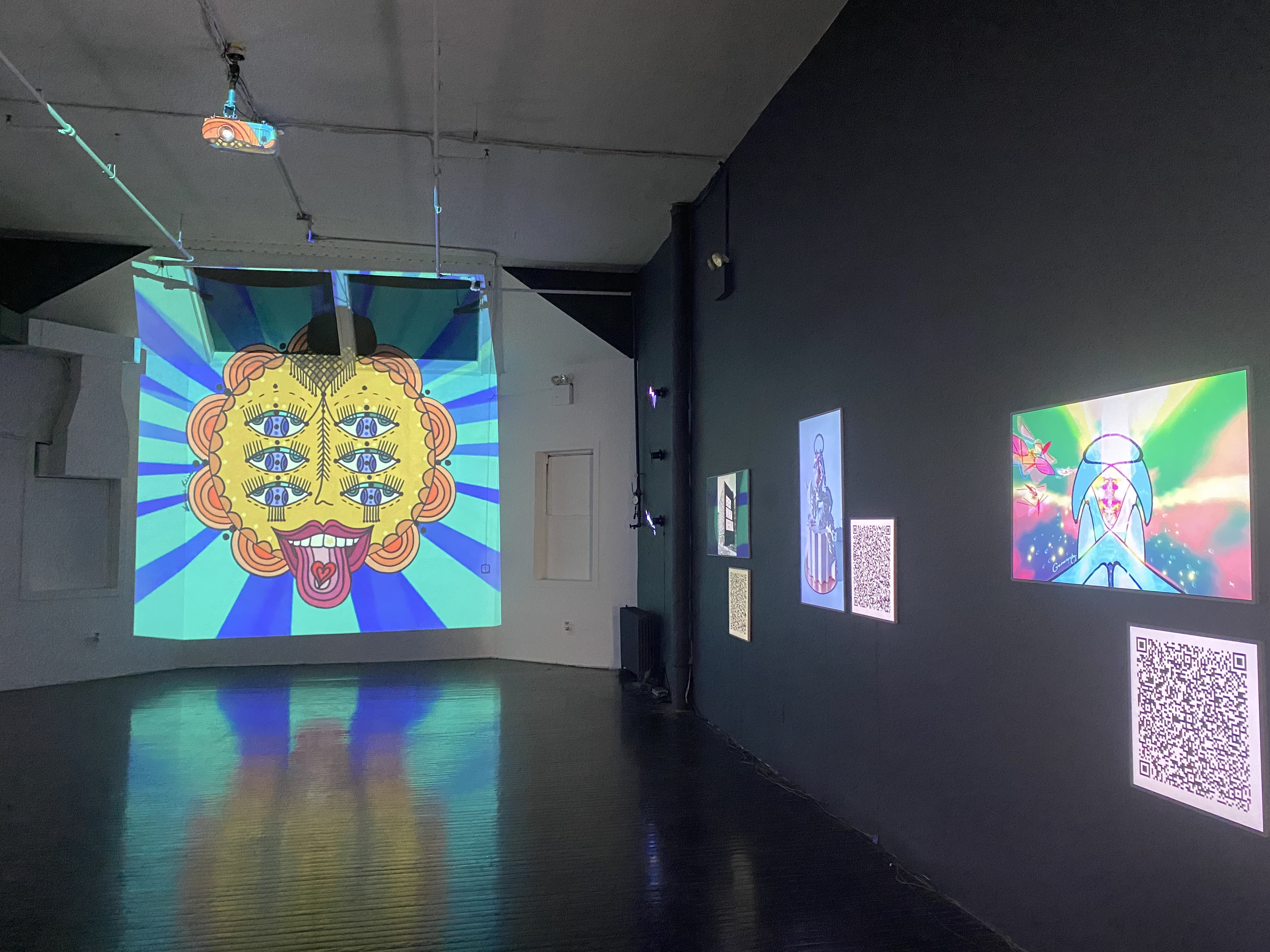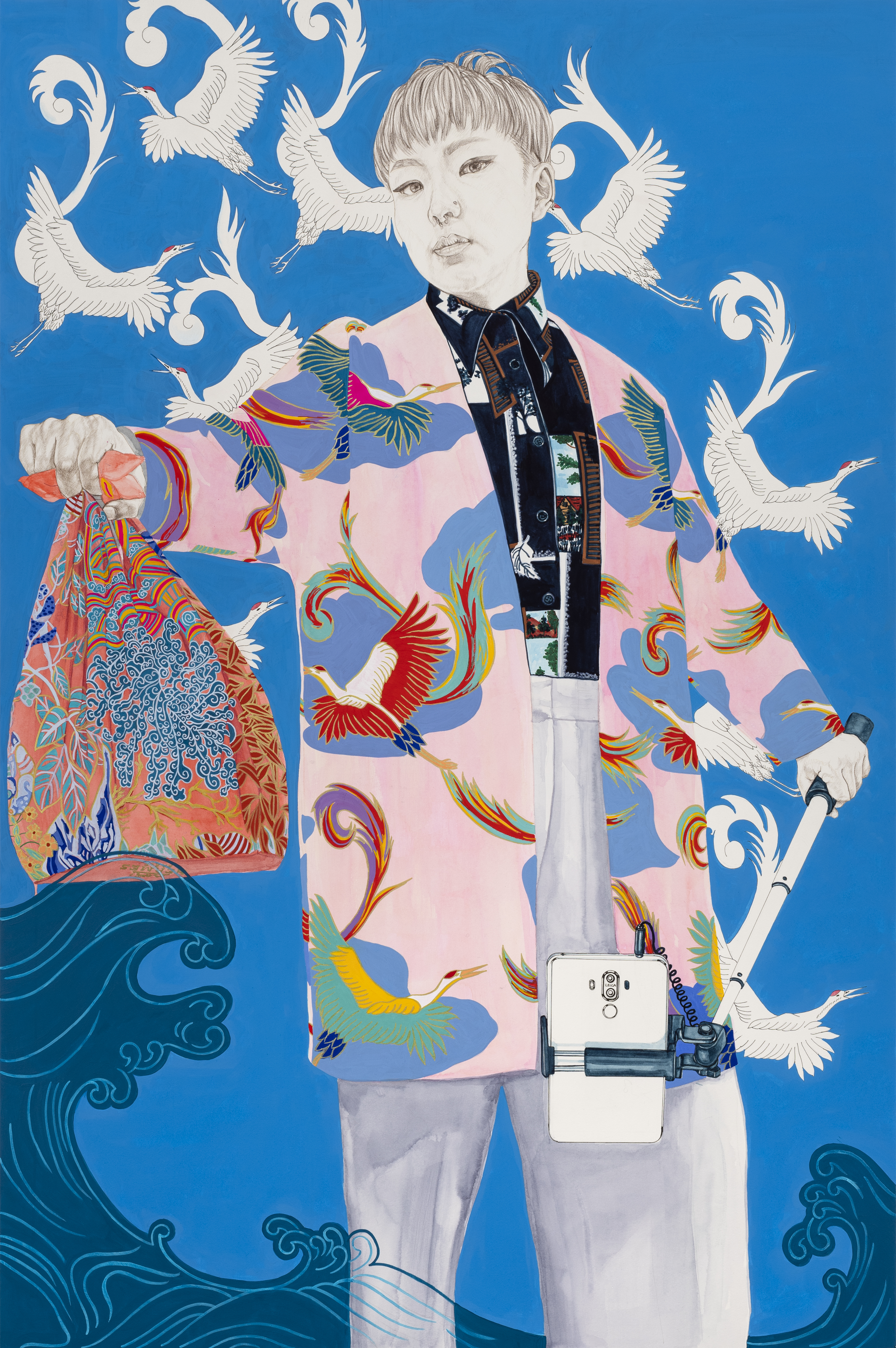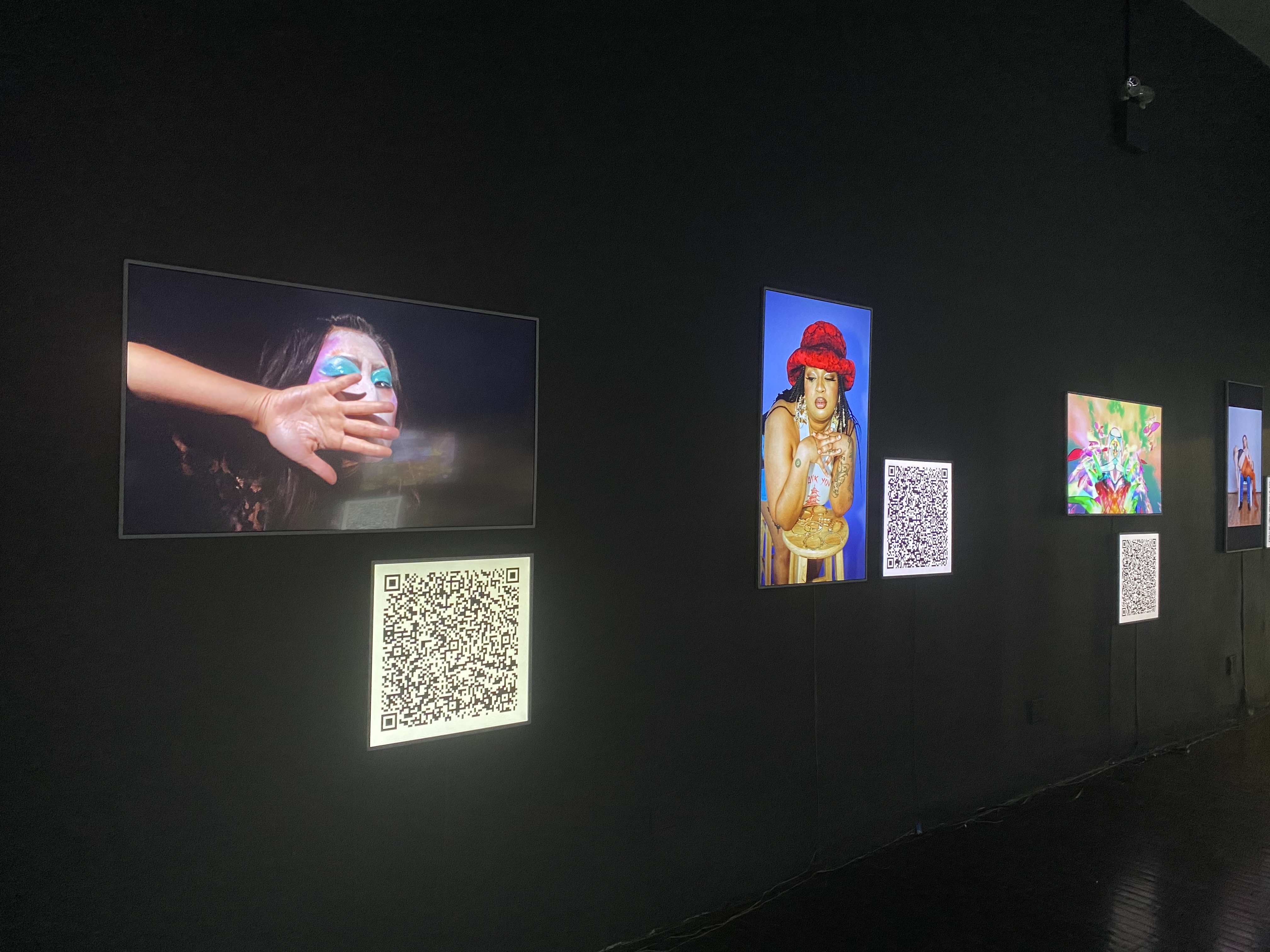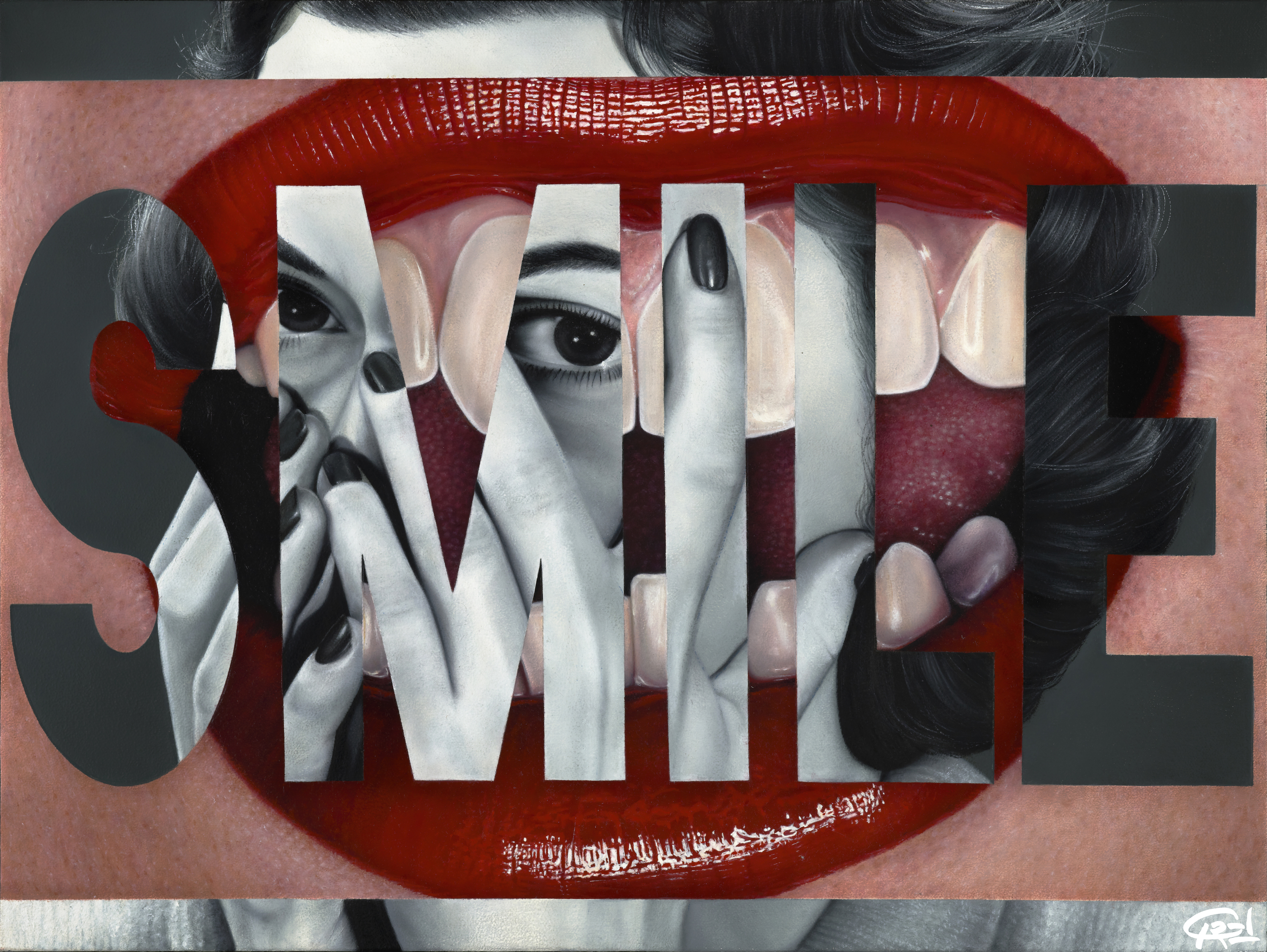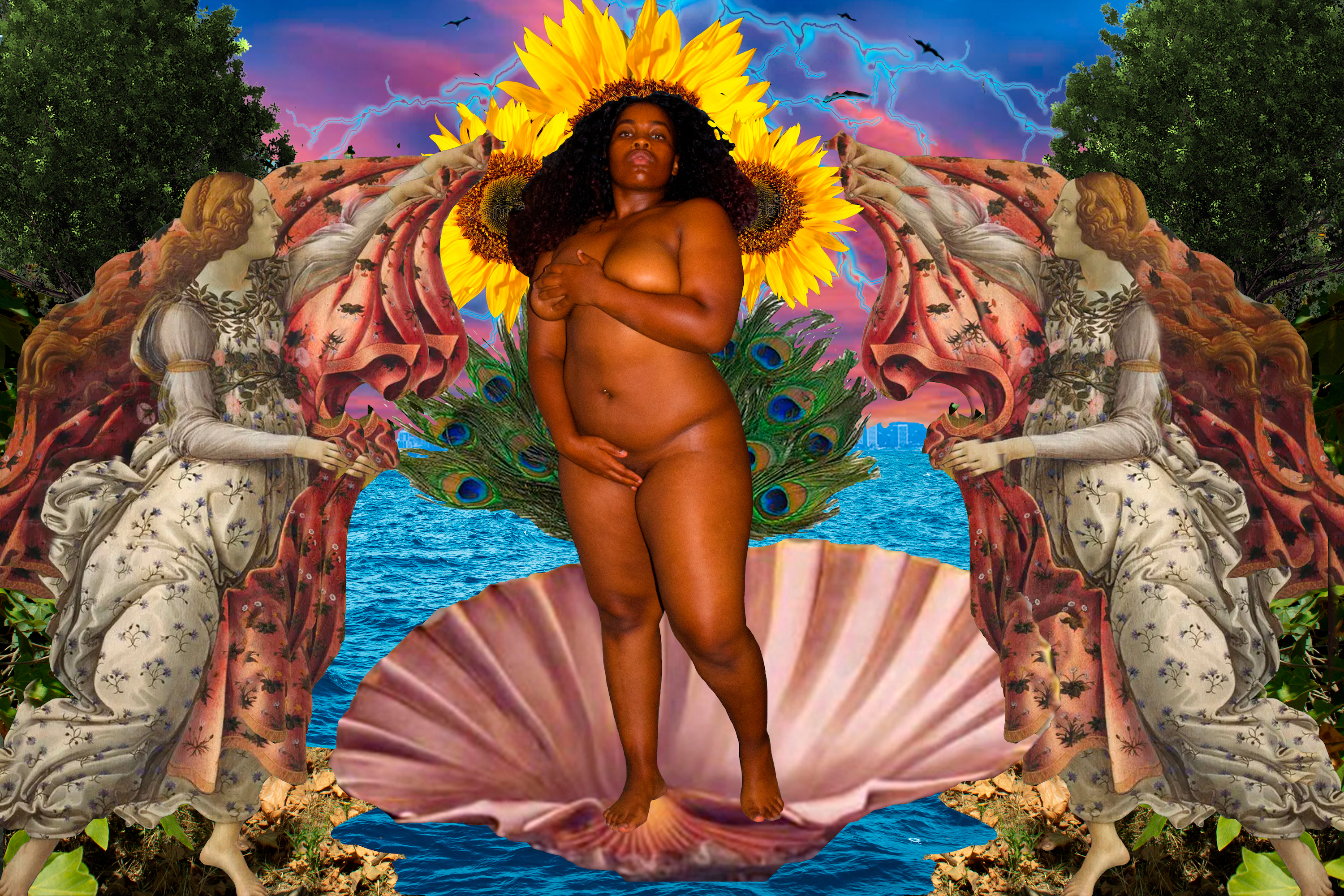June 24–July 3, 2021
There’s always been a pioneering, even contrarian spirit to the Every Woman Biennial (EWB). Formerly known as the Whitney Houston Biennial, the inaugural exhibition opened in March 2014—in the same week as that year’s Whitney Biennial—as a scrappy one-day exhibition in a Brooklyn artist’s studio. With works by women artists hung floor to ceiling and ranging from figuration to agitprop, the Whitney Houston Biennial thumbed its nose at the tepid representational politics of the uptown affair from which it derived its (first) name.1 Over the next two New York editions C. Finley, the biennial’s founder, grew the exhibition to include hundreds of women and non-binary artists of diverse ages, races, and life paths.
The 2021 iteration of the EWB operated as a testing ground for the (post-?)pandemic new normal. The EWB expanded to London for the first time, presenting work by more than 300 artists in IRL locations for a week in early July. This year’s New York show, “NYC/NFT,” moved to the Wild West of the blockchain. Curated by Finley and EWB managing director Molly Caldwell, the show featured NFTs of works by 272 female and non-binary artists selected through an open-call proposal process. Superchief Gallery hosted the sale online, using the OpenSea.io platform, and in person at its Greenwich Village location.
Much ink has been spilled about the burgeoning NFT market and the dominance of white male artists within it. This appalling inequality may partly be explained by the demographics of cryptocurrency traders themselves: only around 15% of Bitcoin users are women, and only about 12% of the blockchain-hosting Ethereum investors are female.2 By helping the participating artists mint their own NFTs, the EWB joins the ranks of collectives such as Women of Crypto Art who seek to uplift historically marginalized voices in this new virtual world.3 True to the ethos of the EWB, the curatorial criteria for the biennial’s NFT edition were not limited to new work, artists new to the show, nor any one Net Art medium. This exhibition included NFTs of digital art alongside more traditional formats such as painting and live performance—a genre notoriously fraught with questions over its commodification. In theory, NFTs jibe with the biennial’s spirit of community-art empowerment. By allowing editioning of works, as well as the contractual ability for creators to receive a portion of any resale value on their works, NFTs have the potential to avoid the pitfalls of the more exploitative practices evident elsewhere in the art world.
One thing that the OpenSea NFT platform couldn’t replicate was the real-life buzz of an opening. EWB countered the coldness of the blockchain by hosting a small New York vernissage with signature flair. On a picture-perfect early summer evening, a dance crew perched along the fountains of Washington Square Park to perform a choreographed routine to Whitney Houston’s late-’90s jam “My Love Is Your Love.” The throngs in the crowded park joined a mini dance party of artists and supporters, who released tinsel streamers from party poppers and bopped to hits by ABBA and Chaka Khan. Walking from the park to nearby Superchief, people murmured about Palestinian liberation and hot flashes. The pleasures of a feminist-identified mass!
Superchief’s confusing salon-style screening scenario, however, muted the talking. In the gallery, painted dark like a blackbox theatre, 20-something flat-screen TVs and several projectors played the NFTs on individual loops. QR codes replaced traditional wall labels, but with the gallery’s ironically poor WiFi connection on opening night, it was anyone’s guess when and on which screen a work would appear. Artists stood transfixed, trying to locate their pieces. Christen Clifford punctured the silence by proudly exclaiming: “That’s my cervix!” Interiors: Cervix, that is—an NFT of her 2015 video, for which she filmed her vagina and cervix with a low-resolution sex-toy camera. Following an ovarian and uterine cancer diagnosis in 2016, Clifford underwent a radical hysterectomy, removing her cervix among other organs. The video—an abstract field of dreamy pinks—serves as both a memorial and a celebration, fitting in a year of so much loss.
After taking in an overview of the biennial’s offerings, I left the gallery in order to browse the remainder of the show on the Superchief site. Like earlier editions of the EWB, a number of works flaunted the body in all its visceral glory. Caviar, by Leah Aron, documents a 2009 performance for which she injected and expelled bright red caviar eggs from her vagina; the soft-focus closeup image Dreamy Girl (2021) by Sandrine Segula depicts a vulva adorned with flowers. Less explicit, but no less erotic, art included Padma Mudra/Unconditional Love by Cuntemporary Artist—a clip of a nude performer enacting a brief yogic meditation, filmed with infrared technology—and works like #BlackLivesPortal (Red Series) by Christa A. Bell, blending a frank depiction of self-pleasure with a gif of the cosmos. Portraiture also dominated the show, from self-portraits to Katrina Majkut’s images of Serena Williams, a digital collage by Tijera S. Williams modelled on Botticelli (The Birth of the Black Woman, 2021), and Kira Nam Greene’s I Slay (Kit)—a gorgeous, vibrantly patterned edition of a painting from 2020. The artist/designer Kit’s pose, with a purse in an outstretched hand, mimics that of David with Goliath’s head in Caravaggio’s famed painting of the Biblical figure.
Some artists tackled Covid malaise; others explored issues such as motherhood, international politics, and climate change. (The environmental impact of NFTs, and the blockchain in general, is hotly debated.)4 A more prominent trend saw artists rework tropes of art history, conceptual art, and marginalized feminine aesthetics. The abstract digital illustration After ‘S, 1983 by Courtney Childress, described as a template for a large textile piece, enacted an erasure of work by an older (unnamed) female artist notorious for treating people poorly—itself a nod to Rauschenberg’s canonized Erased de Kooning Drawing (1953). The photograph Pieta (2020) by Pippilotta Yerna, in which she holds her mother’s body, reimagines feminized care work. In Cat Del Buono’s video Tears—also shown in the 2017 edition of the EWB—a dead ringer for the model in Man Ray’s 1930s photographs brings the famous image to life. Even Net artists with an NFT following contributed work that considered the history of art: Non-Binary Nude Glitch in a GANscape (2016) by marjan moghaddam, though punctuated with emojis and exploding dick balloons, is indebted to Manet.
As someone who doesn’t trade cryptocurrency, the biggest drawback of this year’s NYC/NFT biennial was scrolling through the clunky gallery site. For that reason, I’ll be happy for the biennial to return to a live format in 2022. But whether or not the works of the EWB make a sizeable splash on the NFT market, there’s a creative value in the playfulness, even naïveté, of artists exploring this new technology. Video art, unburdened as it was by historical expectations, became a key medium for queer and feminist artists in the ’60s and ’70s. If we see the EWB’s foray into NFTs as an open-minded consideration of the ways a plurality of practice may infiltrate this field, then even as a one-off, it’s a success.
The 2014 Whitney Biennial’s artist list included ~33% female-identifying artists, and far fewer BIPOC artists. A controversy arose over the inclusion of Joe Scanlan’s “Donelle Woolford” piece, for which the white male artist/academic created an African American female avatar played by Black women actors. The collective HOWDOYOUSAYYAMINAFRICAN? withdrew from the show in protest. See Mostafa Heddaya, “Artist Collective Withdraws from the Whitney Biennial,” Hyperallergic, May 14, 2014: https://hyperallergic.com/126420/artist-collective-withdraws-from-whitney-biennial/.
Anchalee Worrachate, “Only 15% of Bitcoin Traders Are Women, Broker Study Shows,” Bloomberg News, February 5, 2021: https://www.bloomberg.com/news/articles/2021-02-05/only-15-of-bitcoin-traders-are-women-broker-study-shows.
Marris Adikwu, “How Women Are Carving Out a Space of Their Own in the NFT Market,” Vogue, March 30, 2021: https://www.vogue.com/article/nft-art-women.
Justine Calma, “The Climate Controversy Surrounding NFTs,” The Verge, March 15, 2021: https://www.theverge.com/2021/3/15/22328203/nft-cryptoart-ethereum-blockchain-climate-change.
